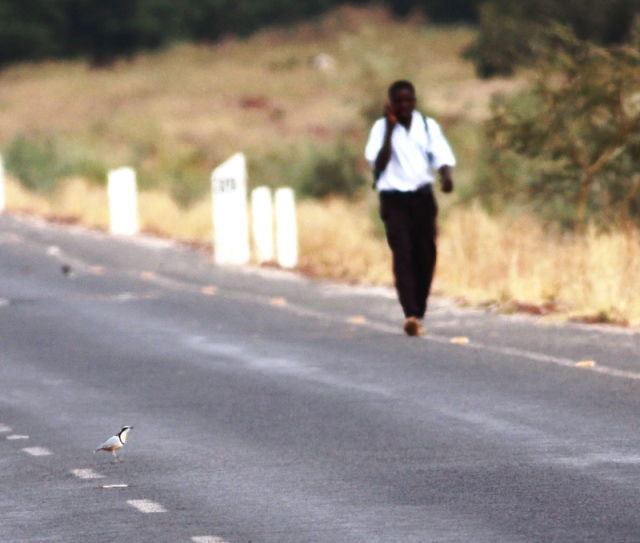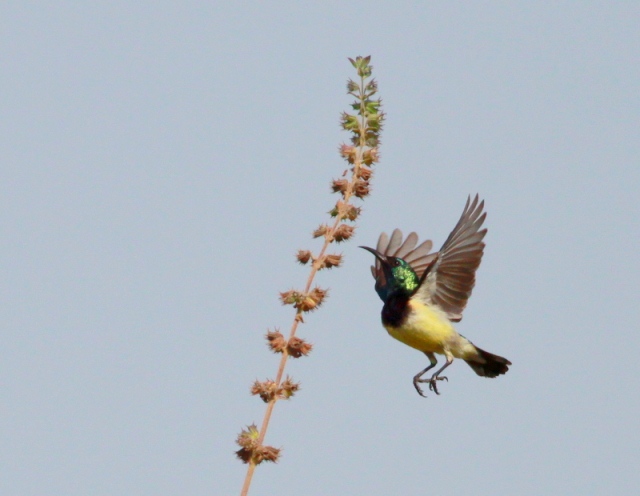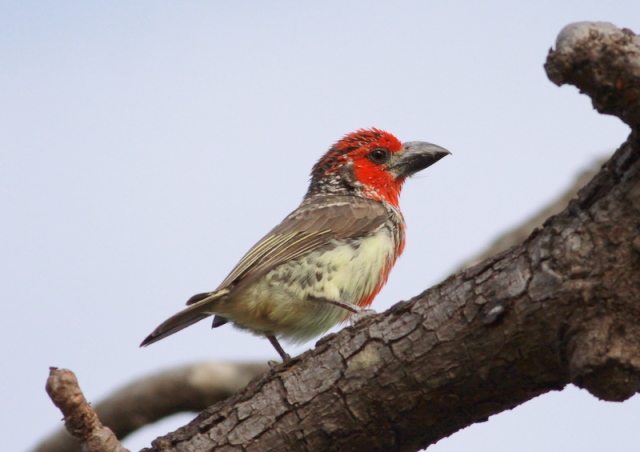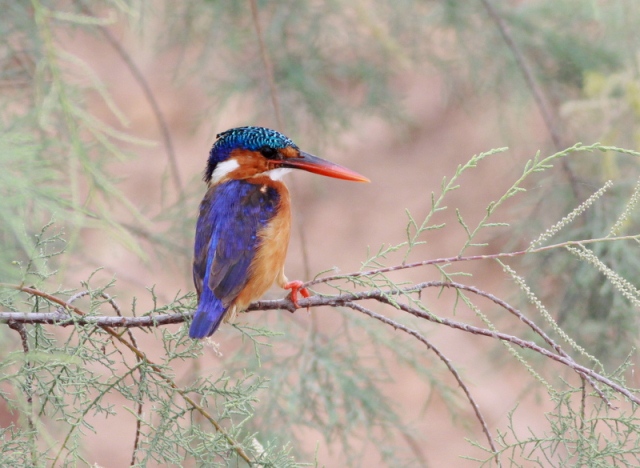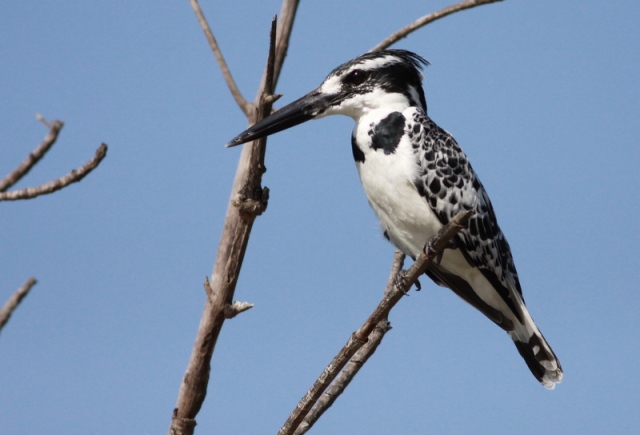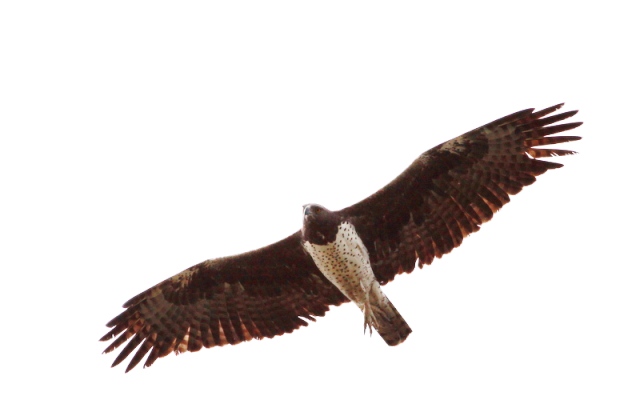From the Field
February 4: Chris Wood from his winter Minnesota tour
Apologies for reporting back so soon but we had one of the best mornings I've ever experienced at the Sax-Zim bog. Balmy temperatures and little snow allowed us to do a lot more walking than usual. We took a stroll along an old logging trail where Common Redpolls and White-winged Crossbills were almost constantly calling. We found an adult female Northern Goshawk perched on the far side of an open area that was being mobbed by White-winged Crossbills! Shortly after Vicky spotted a Great Gray Owl that we watched for nearly an hour. It flew 160 degrees around our group from perch to perch hunting the entire time, with little care that we were there. Part of what made it so incredible was the beautiful hoarfrost on many of the trees!
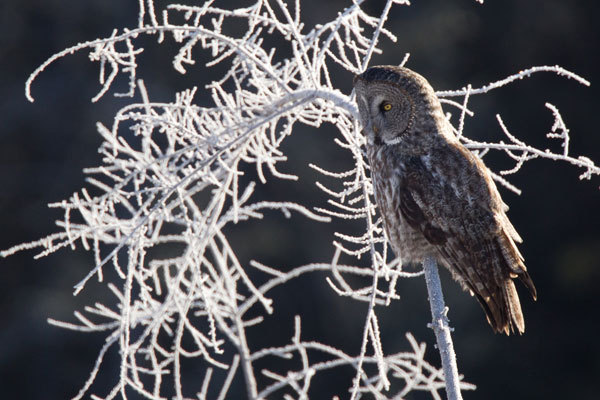
February 3: Chris Wood from his Minnesota in Winter tour
We're off to a great start! We decided to postpone our introductory meeting until dinner in favor of some quick birding around Canal Park – where we had great success with gulls including excellent views of 5 Glaucous, 2 Thayer’s and a very white 1st-winter Iceland Gull with no markings on the primaries. In addition to the common American Herring Gulls we also saw a third-winter Great Black-backed Gull (rare in MN). While not as exciting to most of us as the white-winged gulls, the rarest birds were 3 Ring-billed Gulls, new for this tour and the first time this species has wintered in Duluth (perhaps revealing just how warm and balmy this winter is). After enjoying the gulls we drove around the grain elevators where we saw a Snowy Owl perched atop a utility pole. Now a quick wash up before dinner -- and the introductory meeting.
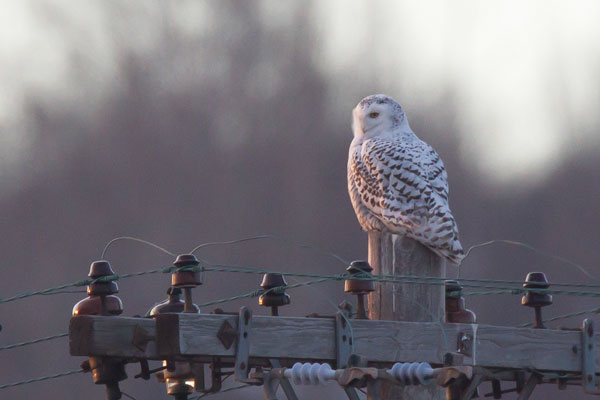
January 25: Steve Howell’s final report from San Blas, Mexico
If all you see is a mass of strangler fig leaves, look again. There are at least 4 Emerald Fig-mice (aka Mexican Parrotlets) in the one photo, taken this morning (below) and an "easy" male in another photo to hone your search-image. My last two days in San Blas I was lazy (it was a vacation, after all) and just birded near town - so only 150 or so species in two mornings. Some of the many highlights included flocks of the iconic Black-throated Magpie-Jay (below), watching a Blue Mockingbird and male Rosy Thrush-tanager (below) in the same field of view, a friendly Sinaloa Wren (below), Red-breasted Chat, a surprise Loggerhead Shrike (now a rarity here, as in so many places), vagrant Kentucky and Yellow-throated warblers, a handsome male Black-capped Vireo (below), and a supporting cast of Varied and Painted buntings, burning bright male Vermilion Flycatchers (below), Thick-billed Kingbirds sailing overhead to catch bees (below), and great views of many common birds, including Streak-backed Oriole (below). I ran into birders out in the field every day I was here and am glad to report that San Blas is as friendly as ever, despite the US fear-mongering media. Sadly it's time to head home tomorrow, but the good news is I'll be back in West Mexico on the Colima tour in March - space is still available, I believe! And I'll be back in San Blas for the regular tour next year.
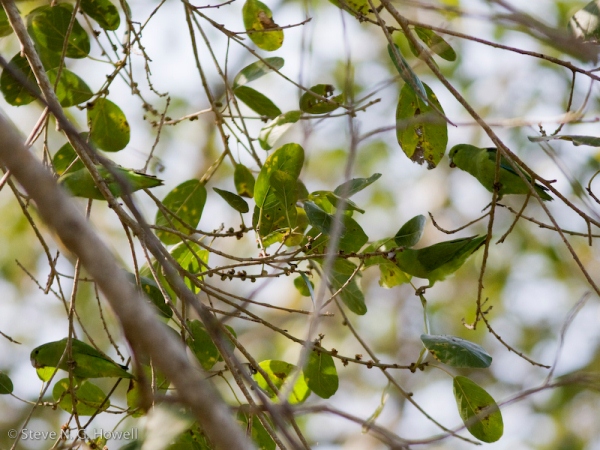
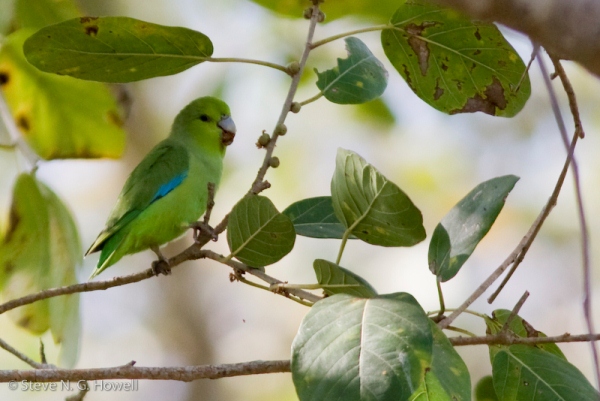
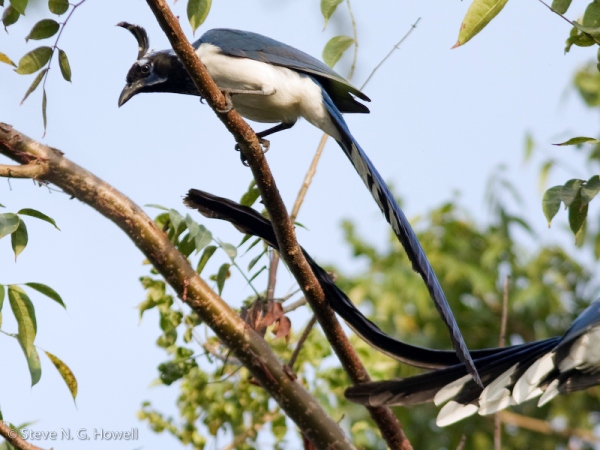
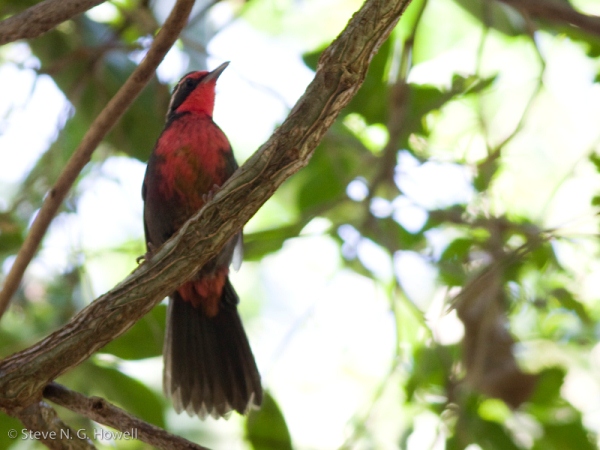
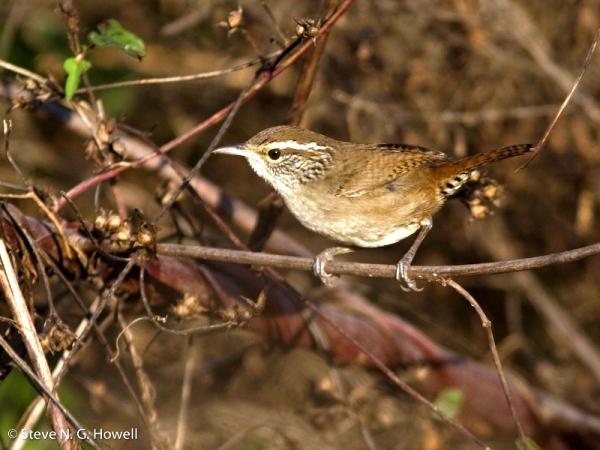
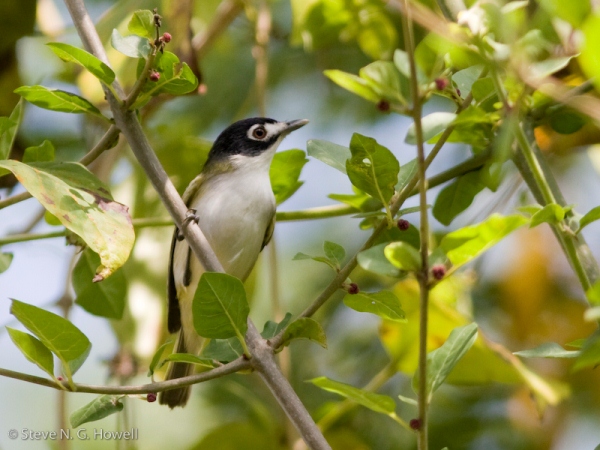
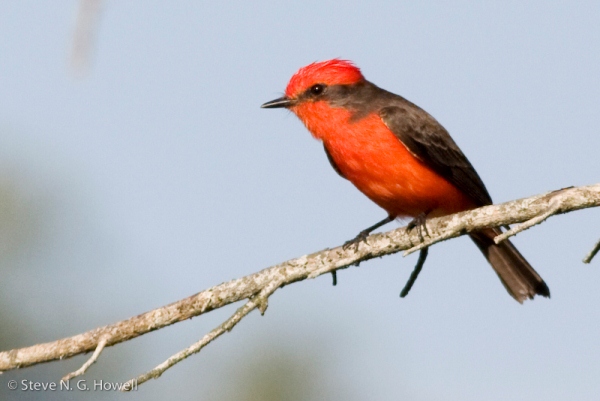
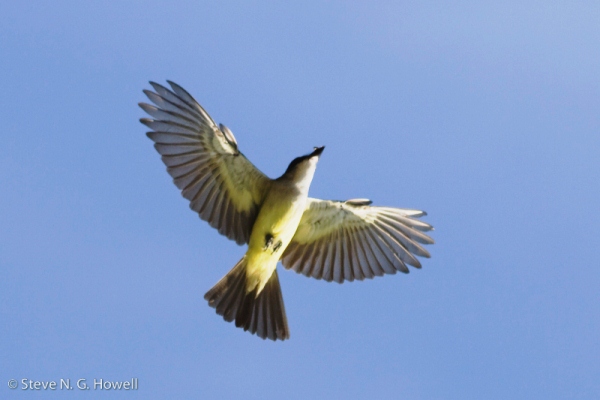
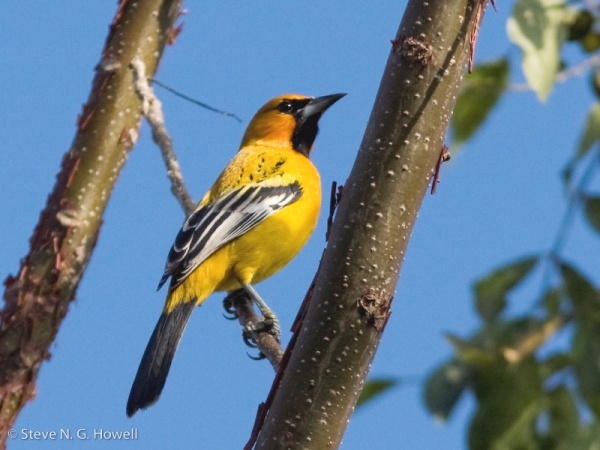
January 23: Steve Howell’s continuing report from San Blas, Mexico
Have you ever wondered why a Buff-breasted Flycatcher is buff?
In the winter, at least, they love weedy meadows and can be quite cryptic in the seeding golden grasses (below). This one was outside my cabin yesterday on Cerro de San Juan, in the meadow that the Great Swallow-tailed Swift and Hook-billed Kite flew over as I was eating my picnic lunch, while Spotted Wrens sat and preened each other on the fence (below). The warbler mix is fun, too: a quick pish and the first five warblers to appear were Hermit, Nashville, Crescent-chested, Black-throated Green, and Red-faced. The biogeographic mixing in West Mexico is unique, both migrants and residents. Today on my boat trip up the river, one minute a male Snail Kite (below), the next a Common Black Hawk (first-year bird, below). On the beach, a Brown Pelican (check out the wing molt!) looking to land, or is that how Heermnan’s Gull got its white head?! And behind me, Wilson’s Plovers and a Yellow-crowned Night-Heron (below). Can't wait to get back to the cold north... Right.
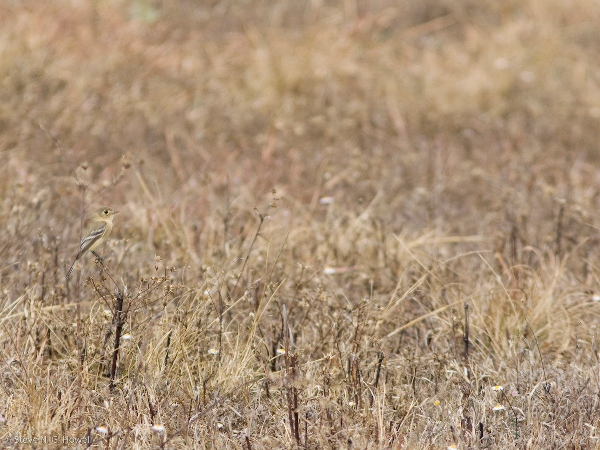
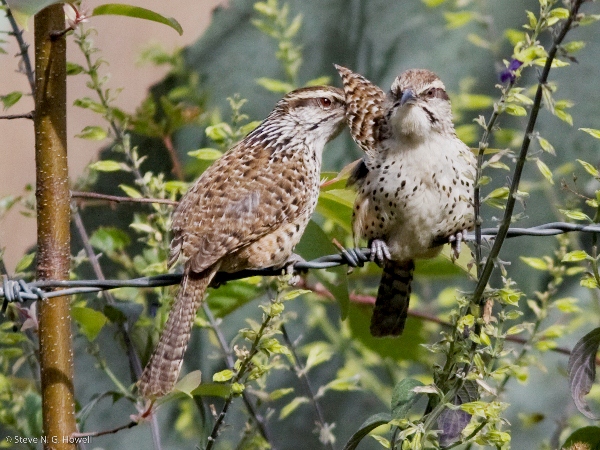
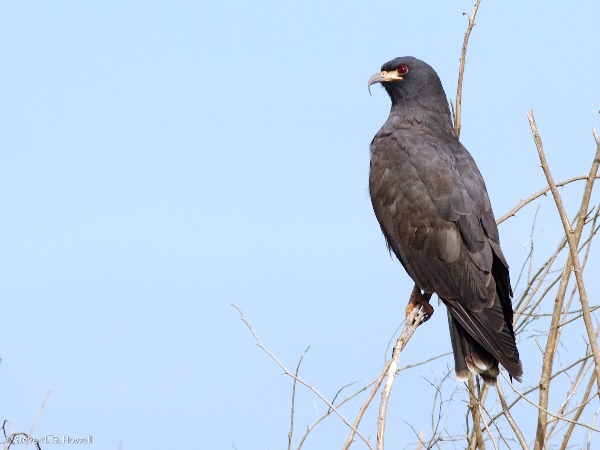
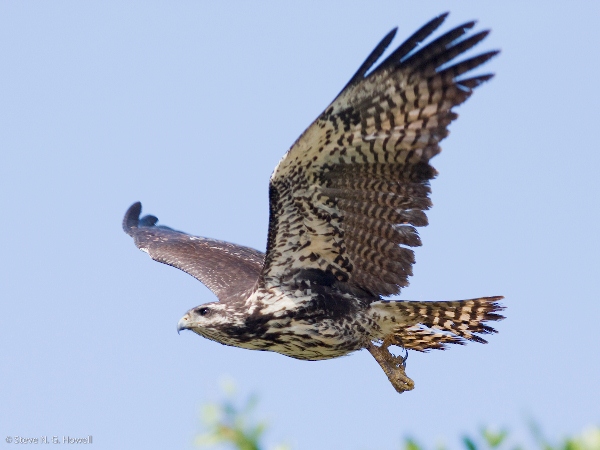
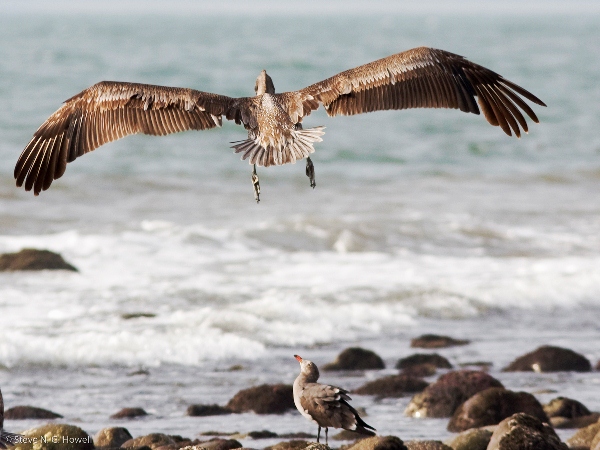
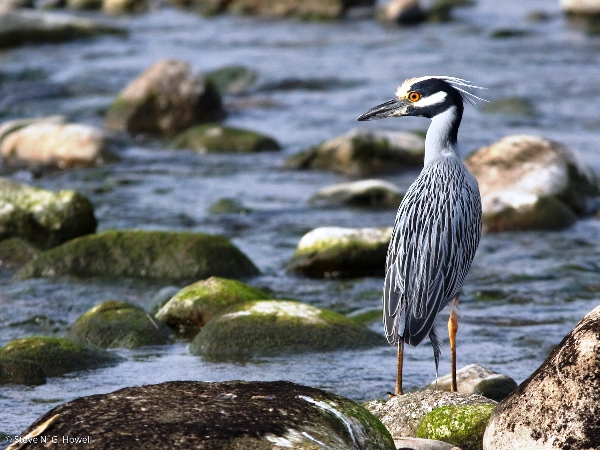
January 20: Gavin Bieber on his just completed La Selva, Ecuador tour
Just back from the wonderful Amazon basin of Northeast Ecuador. This year's La Selva trip enjoyed excellent weather and a spectacular array of birds (below, multiple Hoatzins). Some highlights included wonderful views of Orange-crowned Manakin and Cocha Antshrike, hundreds of parrots milling around forest clay licks (below, Cobalt-winged Parakeets), a suprise Powerful Woodpecker at 10,500ft on our first day and almost 30 species of hummingbirds including the astounding Great Sapphirewing and the gaudy Velvet-purple Coronet. All of this accompanied by a comfortable lodge, excellent food and an astounding sense of remoteness. What a great way to ring in the new year!
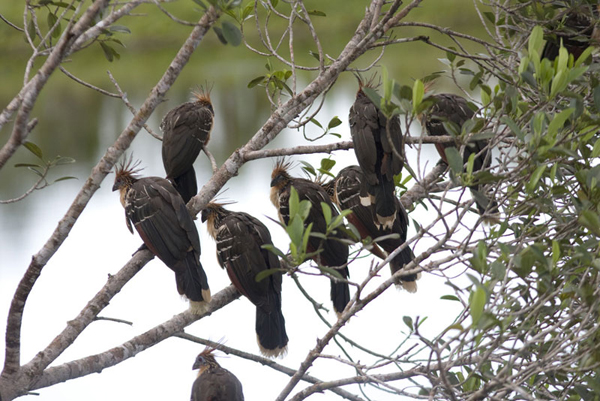
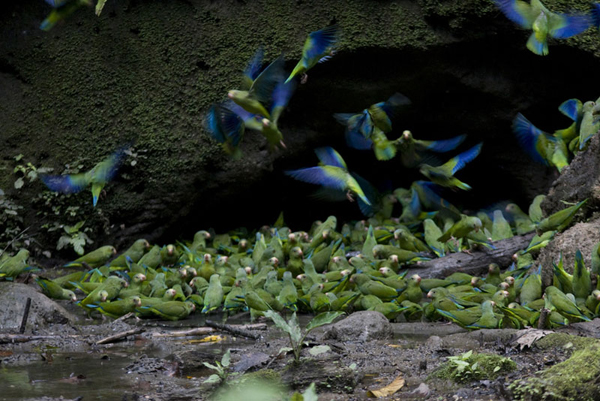
January 19: Jon Feenstra from his Southern California in Winter tour
After the second full day in the field we've now birded our way from the shore of the Pacific Ocean to the shore of the Salton Sea (below). We started today with chaparral specialties like Wrentit and Nuttall's Woodpecker, picked up Mountain Bluebirds, Tricolored Blackbirds, a wayward Tundra Swan was a nice touch and we had a picnic lunch in the mountains while watching the antics of Acorn Woodpeckers. Gray Flycatcher, Sage Thrasher (below), and Black-tailed Gnatcatchers were our prizes in the desert scrub of Anza Borrego State Park. But the Big Show came at sundown as we watched hundreds of Sandhill Cranes and thousands of Ross's and Snow Geese, thousands of White-faced Ibis, hundreds of American White Pelicans, and hordes of ducks and shorebirds and blackbirds settle in to roost in the marshes along the south shore of the Salton Sea.
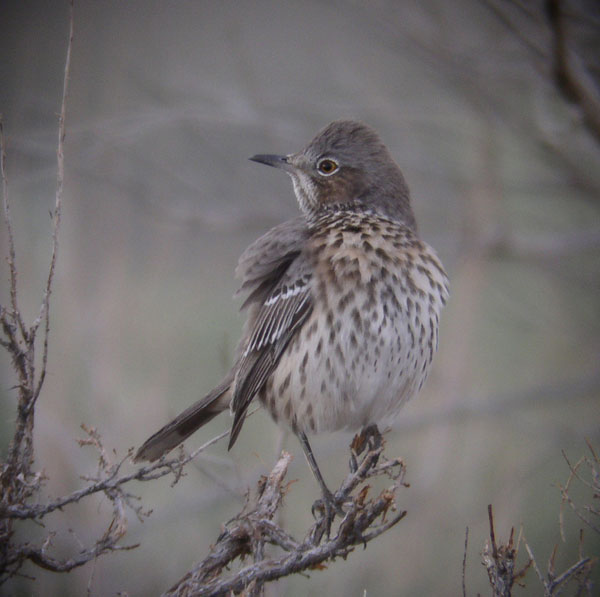
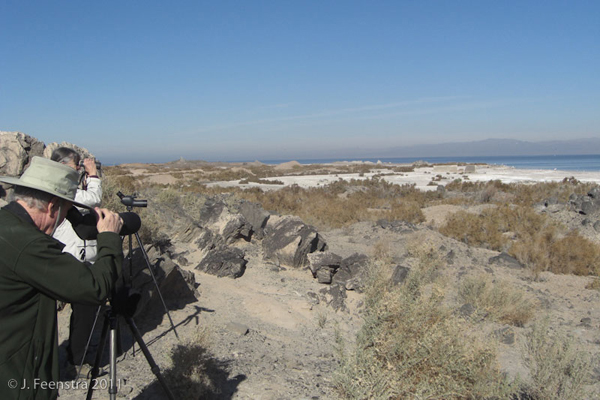
January 18: Steve Howell is taking his first "vacation" in perhaps ten years and where did he choose?
Mexico - San Blas.
The story so far...
Rosy Thrush-tanager or Collared Forest-Falcon? Which to look for first? Three forest-falcons had been counter-calling for some time, but now that I was near enough to look for one, a couple of Rosy Thrush-tanagers had started singing - and quite close by... I crept up on a stunning male thrush-tanager and watched him twitching from side-to-side on a branch overhead (good choice). But when he slipped off I searched the canopy of giant figs and there sat the forest-falcon! Not too shabby... And less than 24 hours ago I had been contemplating the frost-coated roofs of San Francisco as I sat in rush-hour traffic on the way to the airport! Before the forest-falcon/thrush-tanager dilemma, my morning walk here from the hotel (no driving!) started with a pond full of Roseate Spoonbills in various plumages (below), included an obliging male Citreoline Trogon (below), the common but stunning Golden-cheeked Woodpecker (below), and ended up with a low Zone-tailed Hawk (below) as I got back to the hotel! I ended up with about 100 bird species in only 4 hours – West Mexico is full of birds!
Now time to wander downtown to the market, then lunch and a siesta ...
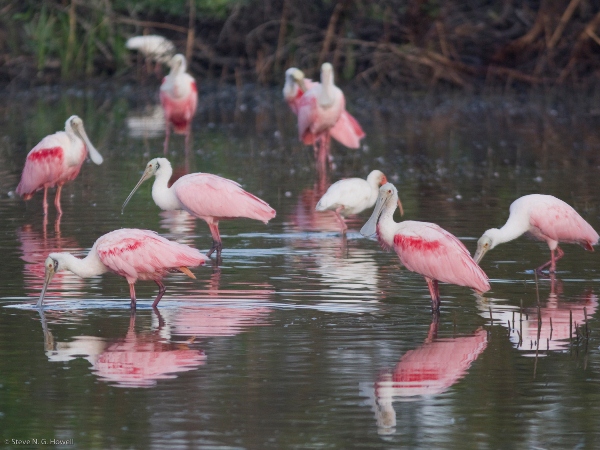
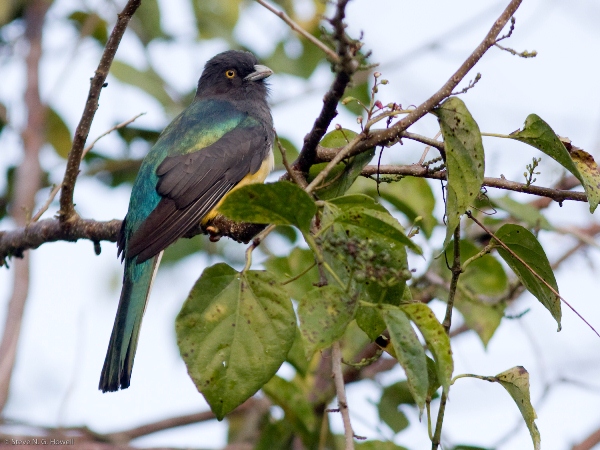
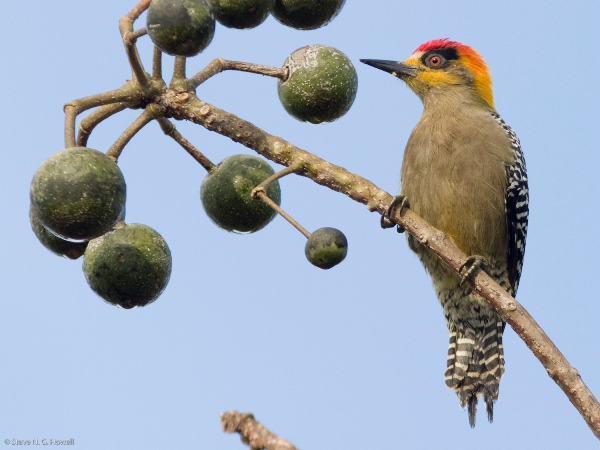
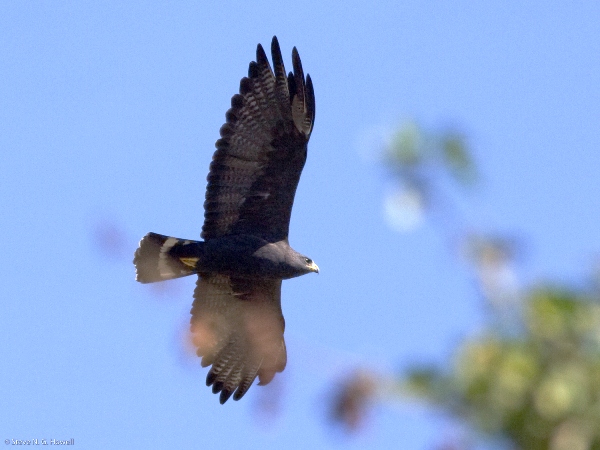
December 27: Rich Hoyer reports on the Mountain Gorillas in NW Rwanda
We had a great time in the Virunga Mountains for a day, and seeing the Mountain Gorillas was an amazing experience. The family group we observed consisted of 14 individuals, including two silverbacks. We watched this mother cuddle and groom her two-month old from just a few feet away.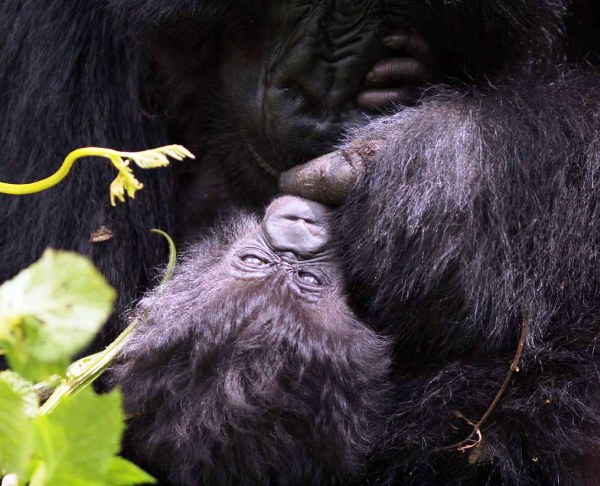
Before the Gorilla trek, a White-necked Raven visited us while having breakfast. Off to bird the Nyungwe now...
November 30: Steve Rooke on his just-completed Ethiopia tours
With the end of the second of two tours to Ethiopiathis fall, I notched up my 16th trip to this endlessly fascinating country. Both tours saw all the hoped-for endemics including such charismatic species as Prince Ruspoli’s Turaco (below), Harwood’s Francolin, Stresemann’s Bush Crow, Sidamo Lark, and White-tailed Swallow along with a tantalizing range of other species more easily seen in this corner ofAfrica than anywhere else, such as the elusive Arabian Bustard. As ever Ethiopia threw up some surprises – such as a pair of Cheetahs near Yabello and Ethiopia’s second record of Citrine Wagtail at Lake Awassa – and elsewhere we watched breeding plumaged Eastern Paradise, Straw-tailed and Steel-blue Whydahs all displaying within a few yards of each other, Northern Carmine Bee-eater riding on the back of a Kori Bustard (below), a perched Fox Kestrel and encountered flocks of hundreds of migrating Lesser Kestrels. There were Ethiopian Wolves hunting Giant Root Rats on the Sanetti Plateau, Gelada Baboons scrambling over sheer cliff faces and a stag Mountain Nyala staring back at us in dense juniper forest. In shortEthiopia presented as it always does, an amazing array of birds, mammals, truly spectacular scenery (Gemma Gorge, below) and fascinating culture.
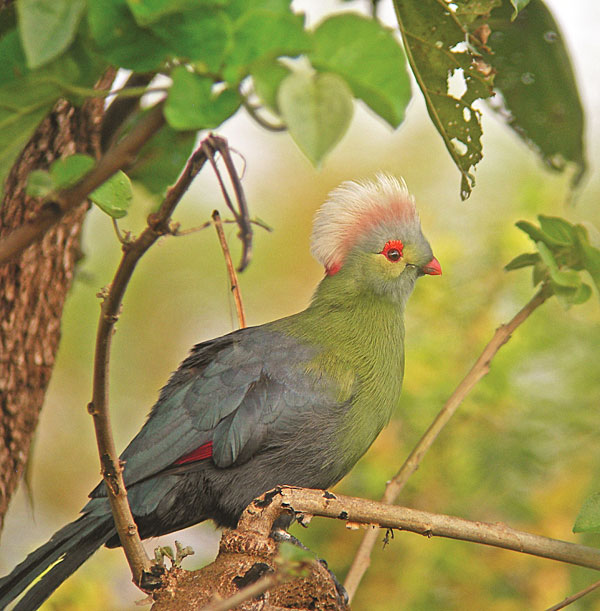
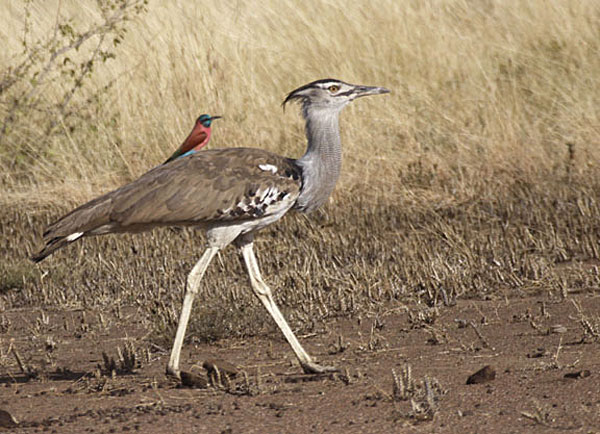
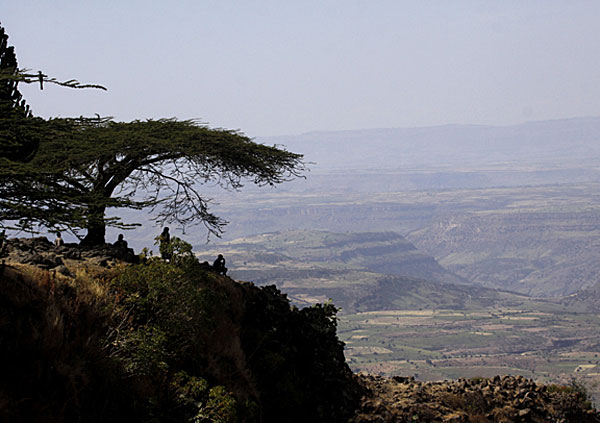
November 30: James Lidster on his just-completed Gambia tour
The 9th WINGS/Sunbird tour to the Gambia was as good as ever, with highlights many and varied. One of our main targets was Egyptian Plover which we saw well (shown below), on a day when we saw 160+ other species! Raptors featured strongly throughout and, our final tally was 31 species including Beaudouin's and Brown Snake-eagles, Bateleur, Martial (below), Wahlberg's, Long-crested and African Hawk Eagles. Of the colourful species for which Africa is so famous we totalled 4 species of roller, 7 of bee-eater, 8 of kingfsher (Malachite and Pied, shown) and 8 of sunbird (Variable, below). Add to this the Grey-headed and Sulphur-breasted Bush-shrikes, Vieillot's Barbet (also below), Four-banded Sandgrouse, Black Scimitarbill, White Helmet Shrike and a couple of surprises in the form of Black-bellied Bustard and Yellow-bellied Hyliota. All this with great weather and great company!
